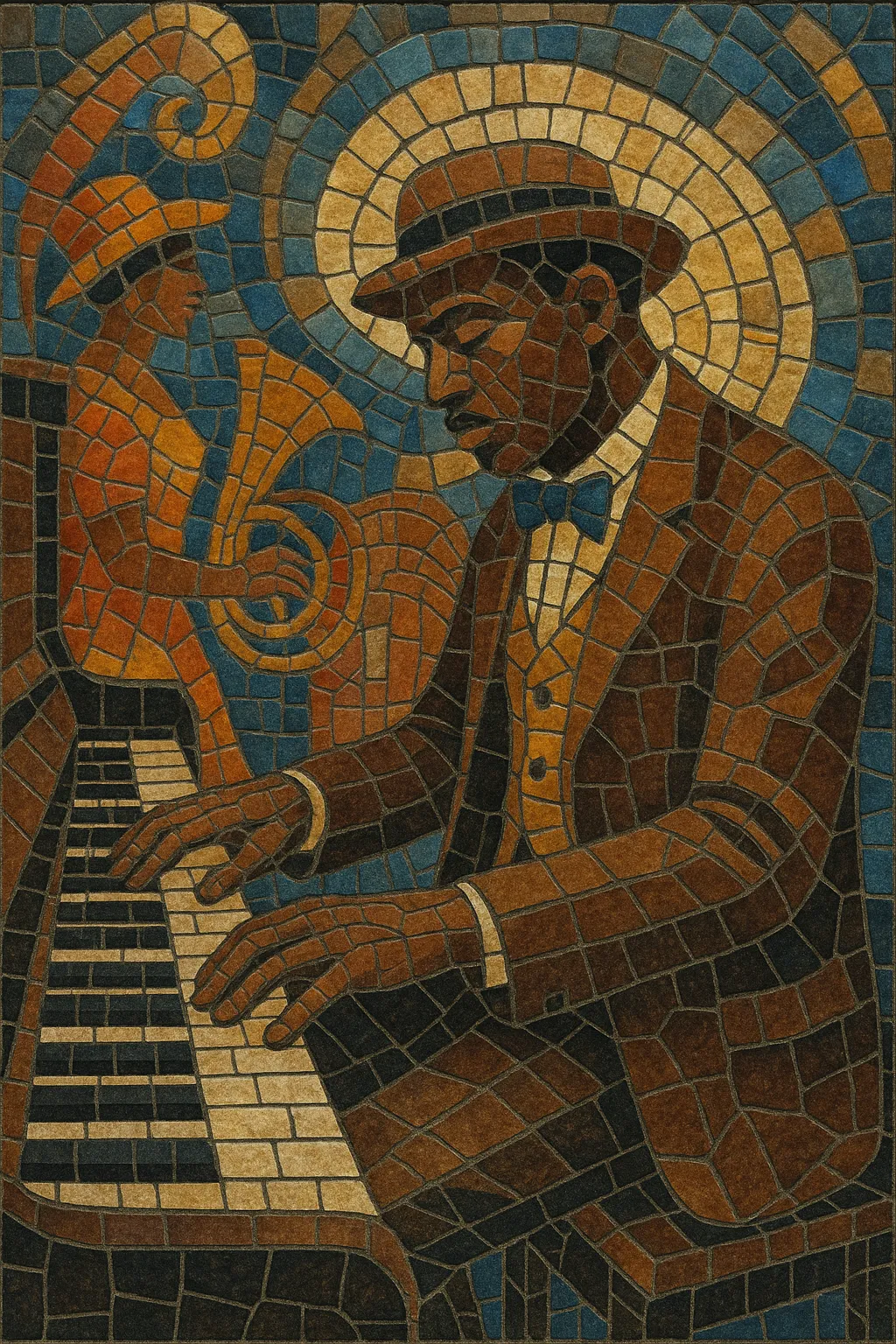Ragtime is an African American–rooted piano style that flourished from the 1890s to the 1910s, characterized by lively syncopation in the right hand against a steady, march-like “oom‑pah” accompaniment in the left hand.
Typically written in 2/4 or 4/4 time and notated with straight (unswung) eighth notes, classic rags unfold in multiple 16‑bar strains, often in the form AABBACCDD. The music draws on cakewalk rhythms, marching-band forms, and popular song, and it became a sensation through sheet music, piano rolls, and parlor performance. Scott Joplin, known as the “King of Ragtime,” helped codify the genre’s refined, compositional approach, calling for moderate tempos and a clear, singing melody.
Beyond solo piano, ragtime was arranged for small ensembles and orchestras, found a home in vaudeville and dance halls, and laid essential groundwork for early jazz, stride piano, and much of 20th‑century American popular music.
Ragtime emerged in African American communities of the U.S., particularly in Missouri (Sedalia and St. Louis) and the Midwest/South, where itinerant pianists adapted dance rhythms from the cakewalk and the steady pulse of military marches. Early rags circulated as sheet music and piano rolls, and saloons and social clubs helped spread the sound.
Publication of Scott Joplin’s Maple Leaf Rag in 1899 established the commercial viability and formal template of the classic rag. Composers such as James Scott, Joseph Lamb, Tom Turpin, Eubie Blake, Charles L. Johnson, Artie Matthews, and others expanded the repertoire. Ragtime also informed popular songwriting (e.g., Irving Berlin’s Alexander’s Ragtime Band, 1911) and was widely performed on vaudeville stages and in parlor settings.
After World War I, hotter, improvisation‑forward jazz styles and stride piano eclipsed classic ragtime in dance halls and on records. While ragtime’s popularity faded, its formal devices, left‑hand patterns, and syncopation directly fed early jazz, Dixieland, stride, and piano blues.
Historians, collectors, and performers reignited interest starting in the 1940s and 1950s (notably through scholarship and archival recordings). A major 1970s revival followed Joshua Rifkin’s Joplin albums and the film The Sting (1973), which popularized Joplin’s rags for a new generation. Ragtime festivals, societies, and contemporary composers continue the tradition today.
Ragtime is a cornerstone of American music: it bridged parlor and popular traditions, standardized multi‑strain instrumental forms, and provided the rhythmic DNA for early jazz, stride, novelty piano, and beyond.


